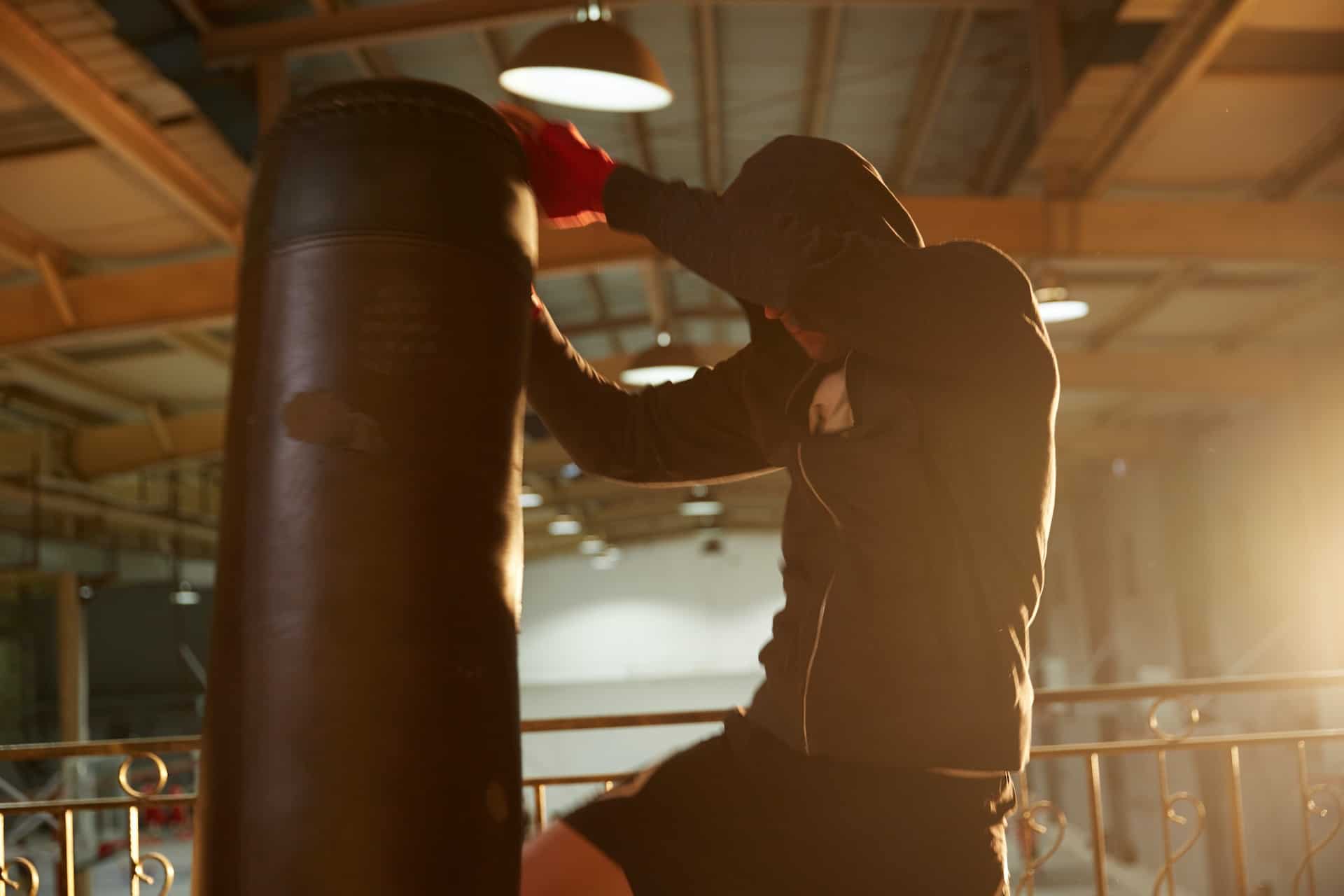Are you passionate about boxing but find it challenging to visit the gym regularly? Don’t worry! With a boxing bag for your home, you can enjoy a rewarding training session anytime. A boxing bag, also known as a punching bag or heavy bag, is an essential piece of equipment for boxing enthusiasts. In this article, we will guide you through the process of selecting the ideal boxing bag for your home, ensuring an effective and enjoyable workout experience.
Table of Contents
- Introduction
- Benefits of Having a Boxing Bag at Home
- Types of Boxing Bags
- 3.1 Hanging Heavy Bags
- 3.2 Free-Standing Punching Bags
- Choosing the Right Size and Weight
- Selecting the Appropriate Filling Material
- Considerations for Mounting
- Setting Up Your Boxing Bag at Home
- Essential Accessories and Safety Measures
- 8.1 Boxing Gloves
- 8.2 Hand Wraps
- 8.3 Punching Bag Stand or Bracket
- 8.4 Floor Protection
- Maintenance and Care
- Frequently Asked Questions (FAQs)
- 10.1 Can I hang a boxing bag in my apartment?
- 10.2 How often should I replace the filling material in my boxing bag?
- 10.3 Can I use a boxing bag for other forms of exercise?
- 10.4 What is the difference between a speed bag and a heavy bag?
- 10.5 Is it necessary to wear hand wraps while using a boxing bag?
- Conclusion
- Get Access Now
Introduction
Having a boxing bag at home provides numerous advantages for boxing enthusiasts of all levels. Whether you’re a beginner or an experienced fighter, a boxing bag offers a convenient and accessible means to practice and improve your skills. By incorporating a boxing bag into your home gym, you can enjoy a full-body workout, enhance your strength and endurance, and relieve stress.
Benefits of Having a Boxing Bag at Home
A boxing bag offers several benefits that make it a valuable addition to your home gym setup. Let’s explore some of these advantages:
- Convenience: With a boxing bag at home, you have the flexibility to train whenever it suits you. There’s no need to adhere to gym hours or worry about crowded spaces.
- Full-Body Workout: Punching and kicking a boxing bag engage multiple muscle groups, providing a comprehensive workout that improves cardiovascular fitness, strength, and coordination.
- Stress Relief: Unleashing your energy on a boxing bag can be a highly effective stress-reliever, allowing you to release tension and frustration.
- Skill Development: Regular practice with a boxing bag helps you develop and refine your boxing techniques, footwork, and combinations.
- Weight Loss and Toning: The intense nature of boxing bag workouts can contribute to calorie burning and help you achieve your weight loss and toning goals.
Types of Boxing Bags
When choosing a boxing bag for your home, it’s essential to understand the different types available. The two most common types are hanging heavy bags and free-standing punching bags.
Hanging Heavy Bags
Hanging heavy bags are the traditional and widely recognized choice for boxing training. They are typically suspended from a ceiling or sturdy overhead beam using chains or straps. These bags offer excellent resistance and movement, simulating real opponents.
Free-Standing Punching Bags
Free-standing punching bags, as the name suggests, do not require any hanging or mounting. These bags come with a stable base that can be filled with sand or water to provide stability. Free-standing bags offer the advantage of portability, allowing you to move them around as needed.

Choosing the Right Size and Weight
The size and weight of your boxing bag depend on your personal preferences and training goals. Here are some general guidelines to consider:
- Size: Boxing bags typically range from 3 to 6 feet in height. Taller bags are suitable for practicing kicks, while shorter bags are ideal for punches and combinations.
- Weight: The weight of the bag determines its resistance. Lighter bags are more suitable for speed and agility training, while heavier bags provide a greater challenge for strength and power development.
Selecting the Appropriate Filling Material
Boxing bags are filled with various materials that influence their feel and durability. The most common filling options include:
- Fabric: Fabric-filled bags are generally softer and offer a more forgiving surface, making them ideal for beginners or those with hand and wrist sensitivity.
- Sand: Sand-filled bags provide a firmer feel and greater resistance, making them suitable for advanced boxers looking for intense workouts.
- Synthetic Fillers: Some modern bags use synthetic materials like foam or fiber, providing a balanced combination of firmness, impact absorption, and longevity.
Considerations for Mounting
If you opt for a hanging heavy bag, it’s crucial to ensure proper mounting. Here are a few considerations:
- Ceiling Strength: Verify that your ceiling or overhead structure can support the weight and movement of the bag. Consult a professional if needed.
- Mounting Hardware: Use appropriate chains, straps, or mounts designed for heavy bags. Ensure they are securely attached to the ceiling or beam.
- Clearance: Allow sufficient space around the bag to avoid any obstructions during training.
Setting Up Your Boxing Bag at Home
Once you’ve chosen and mounted your boxing bag, it’s time to set it up for an effective training session. Follow these steps:
- Clear the area around the bag to create a safe and spacious training zone.
- Ensure adequate lighting and ventilation in the training area.
- Position the bag at the appropriate height, considering your training goals and techniques.
- Securely fasten the bag to the mounting hardware to prevent excessive swinging or displacement.
Essential Accessories and Safety Measures
To optimize your training experience and ensure safety, consider the following accessories:
Boxing Gloves
Invest in a good pair of boxing gloves that fit properly and provide adequate protection for your hands and wrists. Choose gloves with the right weight and padding according to your training intensity.
Hand Wraps
Hand wraps help stabilize your wrists, protect your knuckles, and minimize the risk of injuries. Wrap your hands properly before putting on your gloves for added support and safety.
Read Do You Need Hand Wraps For Boxing Gloves
Punching Bag Stand or Bracket
If you opt for a free-standing punching bag, make sure you select a stand or bracket that is sturdy and secure. The stand should provide stability during intense training sessions.
Floor Protection
Place a protective mat or floor covering underneath your boxing bag to minimize noise, prevent slipping, and protect your flooring from damage.
Maintenance and Care
To prolong the lifespan of your boxing bag and ensure hygienic training conditions, follow these maintenance tips:
- Regularly inspect the bag for signs of wear and tear, such as ripped seams or punctures. Repair or replace damaged parts promptly.
- Clean the bag periodically using a mild soap solution and a soft cloth to remove dirt, sweat, and odor.
- Rotate the bag occasionally to distribute the impact evenly and prevent excessive wear on specific areas.
- Store the bag in a dry and well-ventilated area to prevent moisture buildup and the growth of mold or mildew.
Frequently Asked Questions (FAQs)
Can I hang a boxing bag in my apartment?
Yes, you can hang a boxing bag in your apartment if the structure can support its weight and movement. Consider consulting with a professional to ensure the safety of your setup.
How often should I replace the filling material in my boxing bag?
The frequency of filling material replacement depends on the type of bag and the intensity of use. Generally, it is recommended to inspect and replace the filling when it becomes excessively compacted or shows signs of deterioration.
Can I use a boxing bag for other forms of exercise?
Absolutely! A boxing bag can be used for various exercises, including cardio workouts, high-intensity interval training (HIIT), and cross-training for other combat sports like MMA or kickboxing.
What is the difference between a speed bag and a heavy bag?
A speed bag is smaller and lighter than a heavy bag. It is designed to improve hand speed, rhythm, and accuracy, while a heavy bag focuses on power, strength, and overall conditioning.
Is it necessary to wear hand wraps while using a boxing bag?
Wearing hand wraps is highly recommended when using a boxing bag to protect your hands, wrists, and knuckles from impact and reduce the risk of injuries.
Conclusion
Investing in a boxing bag for your home is an excellent decision for boxing enthusiasts seeking convenience, skill development, and a challenging workout experience. By following the guidelines outlined in this article, you can choose the perfect boxing bag, set it up effectively, and ensure safe and enjoyable training sessions in the comfort of your own home.

